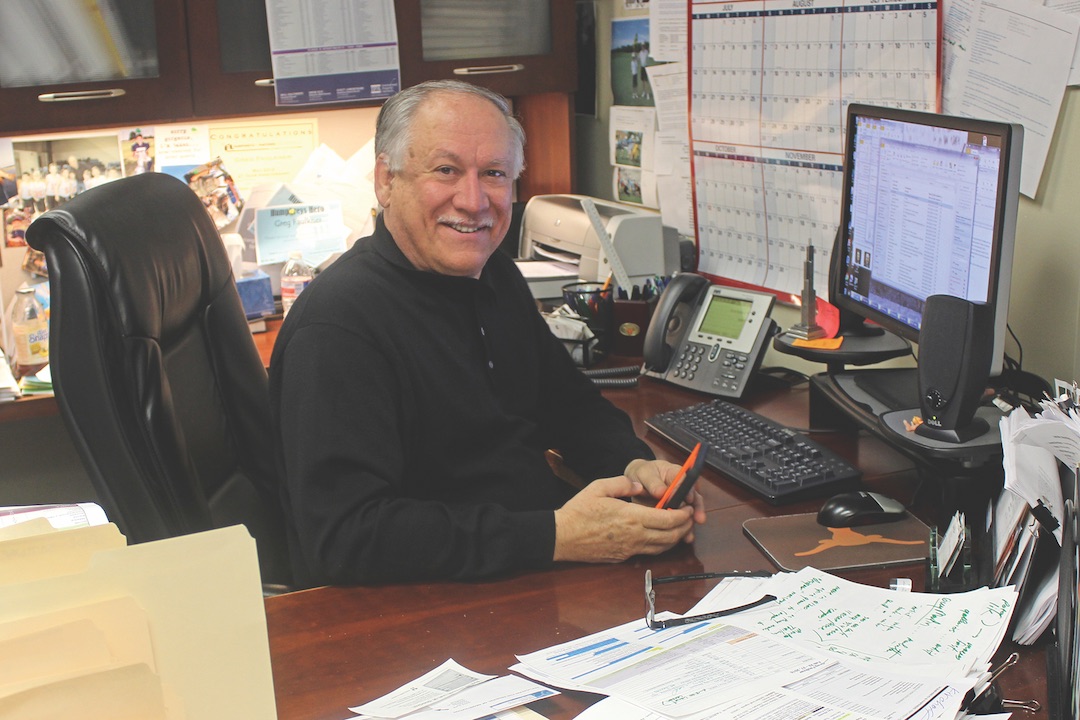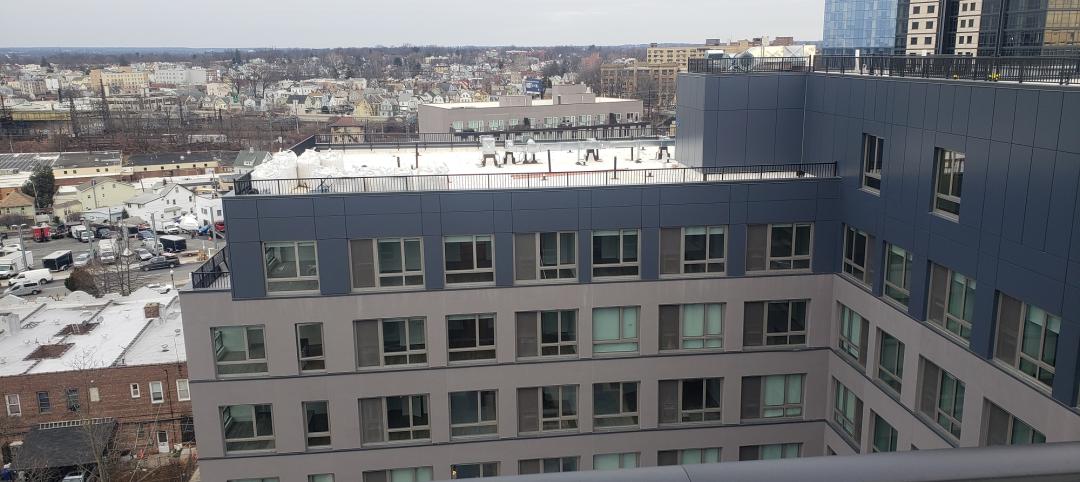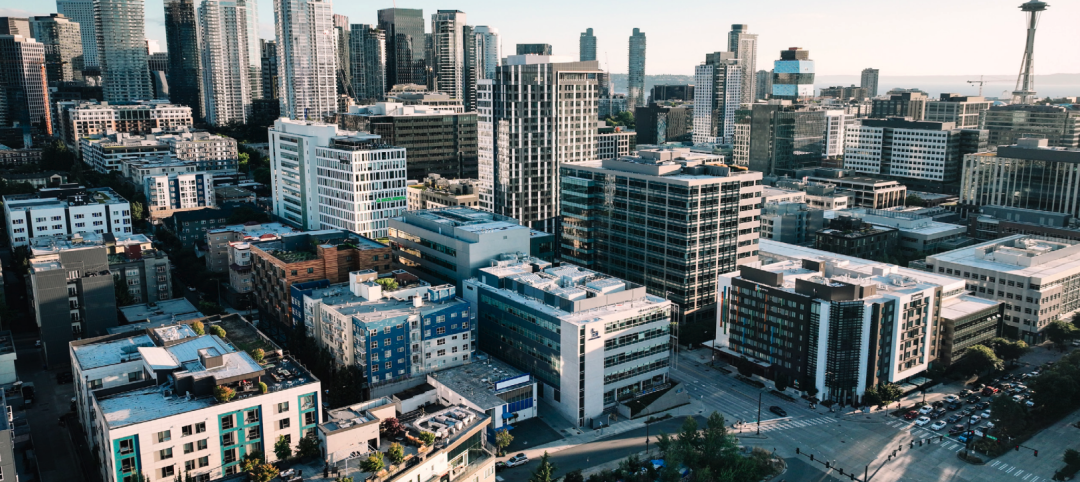Legend has it that Mark Humphreys won his first design award while still a student at Dallas’s W. T. White High School. The winning entry was a home he designed for a district-wide competition. As an architecture student at Texas Tech in the mid-1970s, he took a part-time job designing apartment buildings for a local developer in Lubbock. It didn’t take him long to figure out that he could do the same work on his own. Before you could say “Go Red Raiders,” he had a posse of other Texas Tech architecture students punching out residential designs for his own business.
After earning his architecture degree in 1978, Humphreys had stints at various firms in Lubbock before moving to Dallas in 1989. There he worked with Greg Faulkner, a University of Texas–trained architect who had experience working for a developer in Memphis. Two years later, in defiance of the horrific recession that was paralyzing the U.S. economy, they launched Humphreys & Partners Architects.
With the recession in full swing, 1991 was hardly the best time to roll out any business, no less an architecture firm. Skilled professionals were being laid off right and left; a whole generation of architects would be lost during this period. “There wasn’t much multifamily work at the time, so we started with a few single-family housing projects and built from there,” said Faulkner, HPA’s President.
Those lean years reinforced the importance of viewing each project as an opportunity to build long-term client relationships. “We don’t look at any client as a one-time client; we want to do their next 10 projects,” said Faulkner. “That’s really how we’ve grown the firm.”
See Also: The latest data in the multifamily ‘amenities war’
Market-rate apartments are HPA’s bread and butter. Its work ranges from low-rise suburban buildings to towering urban structures. About half of HPA projects also integrate mixed-use components, whether that’s a sandwich shop or a large-scale retail and entertainment component.
HPA, which reported $78.2 million in multifamily design fees in 2017, ranks as the nation’s largest multifamily design firm. CEO Humphreys estimates the firm designs 12–15% of all apartments built in the U.S. That would represent more than 50,000 units last year.
POWERED BY ENTREPRENEURSHIP
The entrepreneurial spirit is deeply embedded in HPA’s culture. This force has guided the development of a half-dozen trademarked “signature designs” that improve the performance and efficiency of multifamily projects.
Humphreys devised the first of these innovations in 1995. “Big House” is a two-story apartment structure that combines elements of a townhouse and a single-family home, including direct-access garages and private entrances. Because the structure looks more like an upscale single-family home than a typical apartment building, the concept been welcomed in many suburban residential neighborhoods. HPA has designed more than 300 Big House projects throughout the U.S.
HPA introduced the “e-Urban” concept in 2007, in response to skyrocketing construction costs. The design replaces the long hallways of mid-rise apartment buildings with short corridors and elevators, delivering an efficiency ratio of more than 80%, compared to about 60% for typical mid-rise designs. It’s also less expensive to build.
Although multifamily work accounts for about 80% of HPA’s current portfolio, the firm also has significant experience in student residential, senior housing, and hospitality projects.
HPA approaches each project with a developer’s mindset. The firm focuses on the factors that help boost net operating income, such as location, walkability, proximity to parks and marketplaces, and attractive streetscapes. “We’re not just drawing up plans; we really engage with our clients to understand all of the economic factors of a project,” said Faulkner.
To help its clients position their businesses for the future, the firm hosts periodic online webinars and conducts ongoing research to identify demographic, lifestyle, and industry trends. “Anticipating needs is one of the things our clients appreciate most about us, because it contributes to a higher return on investment,” said Humphreys.

HPA Co-founder Greg Faulkner
AN EVER-EXPANDING FOOTPRINT
Strong global demand for multifamily units has fueled a period of unprecedented growth for HPA. “Over the last eight to 10 years, multifamily rental housing has been the center of the universe, and we’ve been riding that wave,” said Faulkner.
Humphreys and Faulkner have never been shy about their growth ambitions. Geographic expansion began in 1998 with the opening of an office in Orlando, Fla. HPA established a West Coast presence in 2005 in Newport Beach, Calif. The firm has grown its U.S. footprint to include offices in Charlotte, Chicago, Denver, Houston, Los Angeles, New Orleans, New York, and Scottsdale, Ariz.
Outside the U.S., HPA has expanded into regions with pent-up multifamily demand. Montevideo, Uruguay, was the site of the first international office, in 2011. The firm now operates a global network with additional offices in Chennai (India), Hanoi and Ho Chi Minh City (Vietnam), and London.
‘We’re not just drawing up plans. We really engage with our clients to understand all the economic factors of a project.’
—Greg Faulkner, AIA, NCARB
Demographic shifts, including downsizing Baby Boomers and Millennials who are drawn to high-density areas, continue to drive market demand for rental units. Those trends have helped grow the number of full-time HPA employees to 342, a 95% increase in employment over the last five years. “We don’t turn down work. We hire people, create jobs, and grow the company,” said Humphreys.
To distinguish the firm as an employer of choice in the current tight labor market, HPA positions itself as an energetic culture that encourages creativity and innovation, but with a strong business sense. “We’re not running an art gallery; we’re running a profit center—and we’re proud to share those profits with our employees,” said Faulkner.
The founders—both of whom are AIA and NCARB members—are committed to nurturing the next generation of architects at their respective alma maters. In 2015, Humphreys donated $1.5 million to Texas Tech University College of Architecture—the college’s largest one-time gift—to establish the Mark E. Humphreys AIA Chair in Urban Design. This endowed faculty position supports ongoing research in sustainable, engaged models of urban design. Faulkner has been instrumental in establishing two academic scholarships at the University of Texas at Austin School of Architecture.
BROADENING THE FIRM’S EXPERTISE
HPA has expanded its in-house expertise by establishing several complementary business units: HPA Design Group, an interiors practice; HPLA, a landscape architecture studio; HP Urban, which specializes in planning and design for high-density projects; HP Civil Engineering; and Atticus Real Estate, the company’s real estate investment and development arm.
Two other HPA businesses fall squarely outside the domain of a traditional design firm. Glass Recycled Surfaces, a manufacturing company that Humphreys purchased in 2013, repurposes glass bottles and porcelain fixtures into countertops, flooring, and wall applications. PiaggioCharter.com offers private air transportation, leasing, and charter services from its base at Addison Airport in suburban Dallas. The business is a deeply personal passion for Humphreys, whose father was a lead designer on the original Lear Jet Model 23. Humphreys earned his pilot’s license in 2007.
At times, HPA has ventured even further from its multifamily base to flex its design chops. Vice President of Design Walter Hughes recently conceptualized two urban skyports for electric-powered vertical take-off and landing aircraft (commonly known as eVTOLs). Last May, HPA’s concept was named one of six finalists at the second annual Uber Elevate Summit. “We’re always searching out new ways to expand the connective tissue between our multifamily residences and emerging disruptive technologies,” said Humphreys.
HPA’s founders are grateful for their success. “Twenty years ago, Mark and I would’ve cut off our right arms to be doing everything we’re doing right now,” said Faulkner. “We need to knock on wood every day because we’ve been very, very fortunate.”
Related Stories
MFPRO+ New Projects | Nov 21, 2023
An 'eco-obsessed' multifamily housing project takes advantage of downtown Austin’s small lots
In downtown Austin, Tex., architecture firm McKinney York says it built Capitol Quarters to be “eco-obsessed, not just eco-minded.” With airtight walls, better insulation, and super-efficient VRF (variable refrigerant flow) systems, Capitol Quarters uses 30% less energy than other living spaces in Austin, according to a statement from McKinney York.
MFPRO+ News | Nov 21, 2023
California building electrification laws could prompt more evictions and rent increases
California laws requiring apartment owners to ditch appliances that use fossil fuels could prompt more evictions and rent increases in the state, according to a report from the nonprofit Strategic Actions for a Just Economy. The law could spur more evictions if landlords undertake major renovations to comply with the electrification rule.
MFPRO+ News | Nov 21, 2023
Underused strip malls offer great potential for conversions to residential use
Replacing moribund strip malls with multifamily housing could make a notable dent in the housing shortage and revitalize under-used properties across the country, according to a report from housing nonprofit Enterprise Community Partners.
MFPRO+ News | Nov 21, 2023
Renters value amenities that support a mobile, connected lifestyle
Multifamily renters prioritize features and amenities that reflect a mobile, connected lifestyle, according to the National Multifamily Housing Council (NMHC) and Grace Hill 2024 Renter Preferences Survey.
Sustainability | Nov 20, 2023
8 strategies for multifamily passive house design projects
Stantec's Brett Lambert, Principal of Architecture and Passive House Certified Consultant, uses the Northland Newton Development project to guide designers with eight tips for designing multifamily passive house projects.
MFPRO+ News | Nov 15, 2023
Average U.S multifamily rents drop $3 to $1,718 in October 2023: Yardi Matrix
Multifamily fundamentals continued to soften and impact rents last month, according to the latest Yardi Matrix National Multifamily Report. The average U.S. asking rent dropped $3 to $1,718 in October, with year-over-year growth moderating to 0.4%, down 40 basis points from September. Occupancy slid to 94.9%, marking the first decline in four months.
Industrial Facilities | Nov 14, 2023
Some AEC firms are plugging into EV charging market
Decentralized electrical distribution is broadening recharger installation to several building types.
MFPRO+ Special Reports | Nov 14, 2023
Register today! Key trends in the multifamily housing market for 2024 - BD+C Live Webinar
Join the BD+C and Multifamily Pro+ editorial team for this live webinar on key trends and innovations in the $110 billion U.S. multifamily housing market. A trio of multifamily design and construction experts will present their latest projects, trends, innovations, and data/research on the three primary multifamily sub-sectors: rental housing, senior living, and student housing.
Multifamily Housing | Nov 9, 2023
Multifamily project completions forecast to slow starting 2026
Yardi Matrix has released its Q4 2023 Multifamily Supply Forecast, emphasizing a short-term spike and plateau of new construction.

















